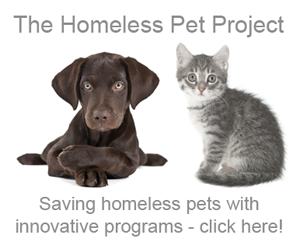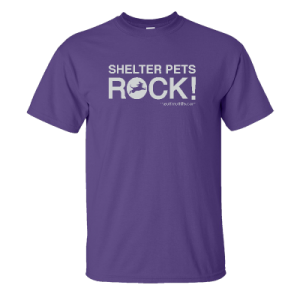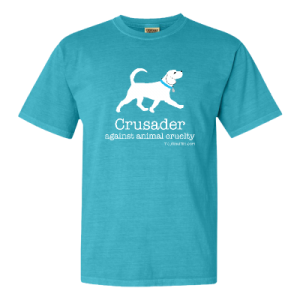Saving America’s Shelter Pets!
by Alva Logsdon
In 2012 and 2013, I hosted ‘pets alive’ workshops, the first of their kind in North Texas, featuring some of the nation’s leading no kill experts. I had no budget or staff, and hosting a workshop without either is a huge undertaking! The reason I took on this challenge is because I truly believe in the life-saving, open-admission animal shelter/community partnership and proven, successful programs that are at work in cities across the U.S. saving the lives of homeless, but adoptable, pets! Far too many pets are needlessly killed in animal shelters in Texas, and throughout the U.S. In many communities, these precious animals have no one to speak for them; they can’t vote, they don’t pay taxes, and they’re considered property with no sentimental value. They deserve more … and they deserve to live! And thanks to the trail blazing no kill leaders, we can indeed save them.
Why No Kill Animal Sheltering Can Work in America
- The no kill equation is already working in several Texas communities and across the U.S. We do not have to reinvent the wheel; because of compassionate leaders that reject the concept that ‘killing is the only solution’ we now have a blueprint to follow. Because they refused to believe in the catch/hold/kill method of animal sheltering, they used innovation and research to create new programs that save lives. You’ll see these programs at work in The Homeless Pet Project series! I am also committed to provided additional resources including marketing campaigns and strategies.
- While approximately 3-4 million pets are killed each year in taxpayer-funded animal shelters, we know that 17 million people will add a new pet to their family. With marketing, public relations, off-site adoptions, better shelter open-to-the-public hours, social media marketing, and pet adoption specials, the shelters pets can be found and adopted. Only 3-4 million pet owners, of that 17 million, are needed to zero out the kill statistics. That’s achievable with the right mindset and programs!
- Advances in animal sheltering management such as community volunteer partnerships, playgroups, baby bottle programs, and disease control, are helping pets find adoptive homes – and more quickly. The goal of any animal shelter should be to increase their live release rate by owner returns, adoptions and working with rescues to release pets at the end of their stray hold.
- People care. Almost nightly here in North Texas, there is an animal story covered in the local news. Pet stories are also shared on national news and major news websites too. People donate, line up to adopt, and share the stories on social media. People love animals and do not want to see them suffer. Tell folks how to help and they will. The pet industry stats tell us that each year, pet owners spend in excess of $53 billion in caring for and spoiling their pets. Cute and funny pet videos dominate the internet. People care and they will help – if you allow them too. And why would any municipality not welcome a volunteer partnership with their community residents and taxpayers?
- It’s more cost-effective to save shelter animals! When an animal shelter houses an animal for the mandatory stray hold, they must feed and care for the animal, then, they must fund the killing and disposal of the body. This means the shelter operates at a loss. That’s a waste of taxpayer dollars; private businesses would fire the director who consistently operates at a loss. Yet municipalities do not hold their shelter directors to the same standards. Why? Why waste taxpayer dollars and kill adoptable pets? Pet adoption specials help pets find homes more quickly, sponsored pet programs zero out the loss, and partnerships with local rescue groups allows the pets to move out of the stressful, often full shelter environment and into a foster home quickly – freeing up kennel space for incoming pets.
With the remaining funds of the 2012 NTX workshop, I traveled around Texas interviewing no kill leaders on location in order to showcase these wonderful programs and inspiring people. I also filmed the 2013 workshop. These videos are now available, at no charge, here on Pawsitively Texas. This allows us to share with the world the programs that are saving lives!
There are several more awesome videos I wish to produce for The Homeless Pet Project, but I’m out of funds. A few of the videos I need to produce to continue on with the mission of the Homeless Pet Project are:
- How to manage an off-site adoption event – and how to implement in your community
- Two unique pet food community programs – and how to implement in your community
- Two low-cost spay/neuter programs – and how to implement in your community
- How a local running group exercises shelter pets – and how to implement in your community
- And some really cool pet adoption promotions
If you’d like to help fund these additional videos, please send me an email and/or purchase a t-shirt or two from my shop here. Please also tell others about my t-shirt shop featuring designs for dog love, cat servants 😉 and animal rescue advocates – the more tees sold, the more I can do to help homeless pets in need! I have more than 100 designs available and they are unique, available only at Pawsitively Texas shop Thank you!!!
The Definition of No Kill Animal Sheltering
Don’t toss the baby out with the bathwater! I see some people immediately reject the idea of pets alive/no kill without taking the time to fully understand what it means and how to achieve it. There has also been misinformation spread resulting in confusion about the meaning of ‘no kill’. For the record, it’s not advocating the warehousing of animals or hoarding. That’s cruelty. The definition of no kill that I believe in is the implementation of low-cost, often no cost, innovative life-saving programs with the commitment that killing is not the option. The sad commercials raise funds for the national organizations, but they don’t provide much hope that there is a solution. But there is … and it’s working in communities across the U.S. where 90% or more of the pets that enter in animals shelters are saved! Animal rescue is an imperfect mission wrought with challenges; there have been some failures along the way … but they are the exception and do not define no kill.
Here are some of the programs that are working – and the people building no kill communities!
Animal Shelter Crisis Management by Shelter Director Cheryl Schneider: http://pawsitivelytexas.com/animal-shelter-crisis-management/
Animal Rescue Resources by Alva Logsdon: http://pawsitivelytexas.com/animal-rescue-resources/
How to Start an Animal Shelter Volunteer Program by Sgt. Karl Bailey: http://pawsitivelytexas.com/how-to-start-an-animal-shelter-volunteer-program/
How to Recruit and Maintain a Strong Volunteer/Foster Program by Dr. Ellen Jefferson: http://pawsitivelytexas.com/how-to-recruit-and-maintain-a-large-volunteer-foster-program/
19 Places to Find and Recruit Volunteers by Alva Logsdon: http://pawsitivelytexas.com/19-places-to-find-animal-rescue-volunteers-and-fosters/
How To Photograph Shelter Animals – and increase adoptions by Pro Photographers: http://pawsitivelytexas.com/how-to-photograph-pets/
How Austin Texas Became No Kill featuring expert no kill leaders: http://pawsitivelytexas.com/how-austin-texas-became-a-no-kill-animal-shelter/
How Seagoville Texas Became a No Kill Animal Shelter: http://pawsitivelytexas.com/how-seagoville-animal-shelter-became-no-kil/
Building a No Kill Animal Shelter – No Experience Required: http://pawsitivelytexas.com/building-a-no-kill-community-no-experience-needed/
No Kill: Achieving and Maintaining Success in Spite of Obstacles: http://pawsitivelytexas.com/no-killachieving-success-despite-the-obstacles/
The Life-Saving Programs of a No Kill Animal Shelter: http://pawsitivelytexas.com/the-lifesaving-programs-of-a-no-kill-open-admission-shelter/
Animal Shelter Disease Control with Dr. Ellen Jefferson: http://pawsitivelytexas.com/low-cost-animal-shelter-disease-control/
7 Ways to Reduce the Spread of Animal Shelter Illness & Diseases: http://pawsitivelytexas.com/7-ways-to-reduce-the-spread-of-illness-in-animal-shelters/
How to Reduce the Spread of Animal Shelter Disease by Dr. Ellen Jefferson: http://pawsitivelytexas.com/7-ways-to-reduce-the-spread-of-illness-in-animal-shelters/
Public Relations Tips to Get Media Coverage, Increase Pet Adoptions, & Recruit Volunteers: http://pawsitivelytexas.com/animal-shelter-rescue-public-relations/
How to Save Stray and Abandoned Dogs by Deborah Hoffman: http://pawsitivelytexas.com/how-to-rescue-and-rehome-stray-animals/
How to Reform Your Animal Shelter by Kelli Alexander: http://pawsitivelytexas.com/animal-shelter-reform-open-records/
Animal Welfare & No Kill Advocacy by Michael Kitkoski: http://pawsitivelytexas.com/animal-shelter-advocacy-101/
How to Help Stray or Feral Cats featuring Alley Cats Allies: http://pawsitivelytexas.com/how-to-help-stray-cats-videos/
No Kill Animal Sheltering Frequently Asked Questions featuring no kill experts: http://pawsitivelytexas.com/no-kill-experts-faq-session/
YOU can help defray the costs I incur for Pawsitively Texas and Mission: Pets Alive (annual hosting, email list send, new video production, etc.) with the purchase of a T-shirt from The Pawsitively Texas shop (click here)! You can subscribe to my email lists by clicking here and submit a story to Pawsitively Texas here.









